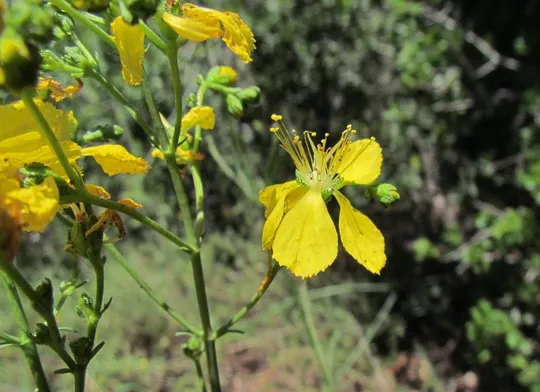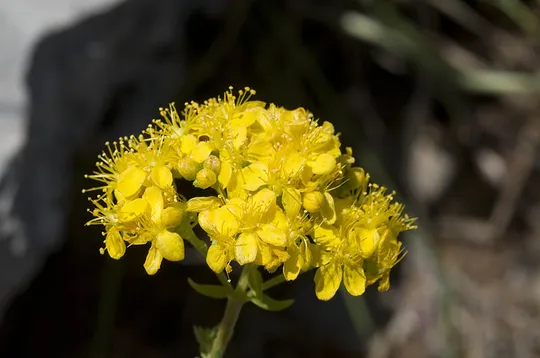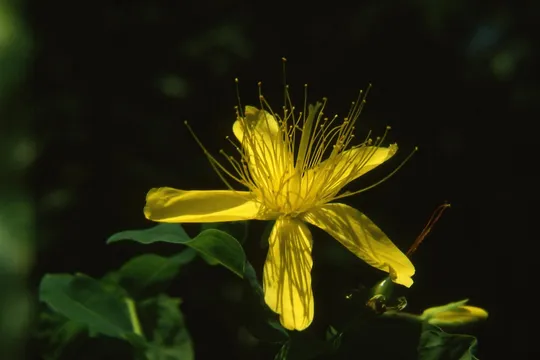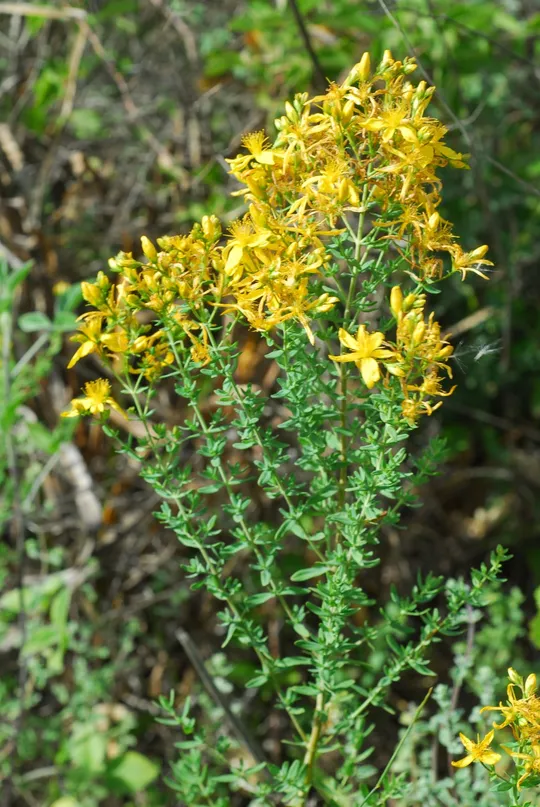Square-stalked St. John's Wort
Hypericum quadrangulum
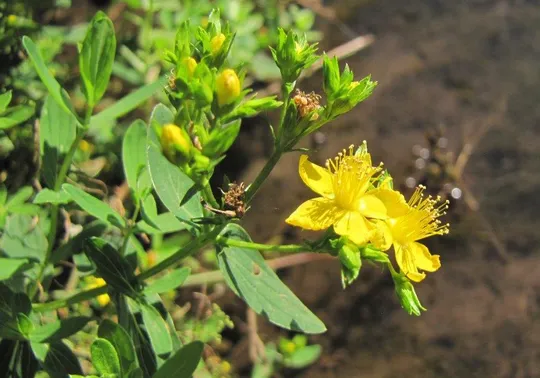
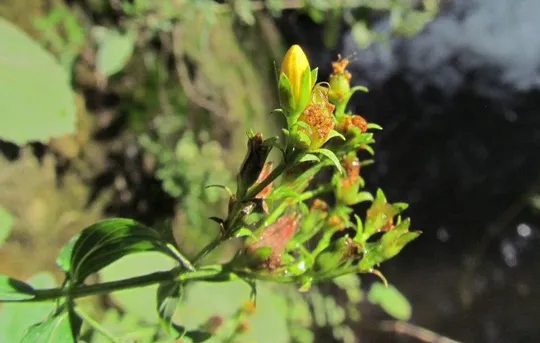

Hypericum tetrapterum now grows in
two regions: the Hula Valley and the Golan Heights. In total, there are four
sites in Israel, although there are estimates of five. In the northern Hula Valley, H. tetrapterum
survived in Nuhela, Tel Dan and the Snir Stream (Hatsbani), but disappeared from
the Dafna-HaGoshrim area. In the northern Golan Heights, it is found at the Banias
and disappeared from the Tel Azziat area. It had been previously collected once,
in the Lower Galilee in the Yavne’el Stream (1957), but has disappeared from
there.
In Israel – moist soil near streams and springs. In the
Middle East –wetlands, along stream banks and in marshes up to an altitude of
1900 meters.
The distribution of most of the genera in the Hypericaceae
family is tropical and subtropical and only the genus Hypericum penetrates into temperate areas. The genus Hypericum
has about 370 species, many
of them in the Mediterranean region.
They have characteristically scattered black glands on their leaves and
flower parts and translucent glands on the leaves.
H.
tetrapterum belongs
to the section Hypericum,
in which black glands always appear on the stems, the leaves and the stamen
filaments, but not consistently on the sepals and on the petals. In Israel,
there are three species in this section: H. triquetrifolium, H. perforatum
and H. tetrapterum. H. tetrapterum has four
protruding ribs
along the stem, but the two other species have only two ribs along the stem.
·
The number of regions in which Hypericum tetrapterum grows has decreased
from three to two and even in the regions where the plant survives the number
of sites is very small and is declining.
·
The decline in the number of sites
reflects the decrease in the number of spring and stream habitats in northern
Israel.
·
H. tetrapterum is protected in
the Dan Reserve, the Snir Stream Reserve and in the Banias.
·
The species is found throughout Europe
and there is no data available of its being endangered in these countries.
The sites on
which Hypericum
tetrapterum was seen and
collected should be subject to long-term annual monitoring to
record its population sizes and change trends, as a basis for a management
plan. Plants should be grown from cuttings in refuge gardens and in the gardens
of the nature reserves in which it grows – Tel Dan, Snir Stream and Banias.
Hypericum tetrapterum grows in all the
European countries including northern Scandinavia, and southeastern Caucasus. In
the Middle East, it is found in Turkey, northern and western Iran, northern
Iraq and western Syria. It is not noted from Lebanon.
Hypericum
tetrapterum is
a perennial plant of moist soils and stream sides in the Hula Valley and the
Golan Heights. It is extremely rare and found on a limited number of sites
whose number is declining.
Current Occupancy Map
| 1000 squre meter pixel | 5000 squre meter pixel | 10000 squre meter pixel | |
|---|---|---|---|
| number of observations | 0 | 0 | 0 |
| in total pixels | 0 | 0 | 0 |
| Family | Clusiaceae |
| Classification | On the endangered species list |
| Ecosystem | Mediterranean |
| Chorotype | Mediterranean (Euro – Siberian) |
| Conservation Site | Enot Nuhela and Tel Dan |
| Rarity |
1
4
6
|
|---|---|
| Vulnerability |
0
3
4
|
| Attractiveness |
0
2
4
|
| Endemism |
0
0
4
|
| Red number |
1
5.3
10
|
| Peripherality | N |
| IUCN category | DD EW EX LC CR EN VU NT |
| Threat Definition according to the red book | Critically endangered |
 Based on:
Based on:
